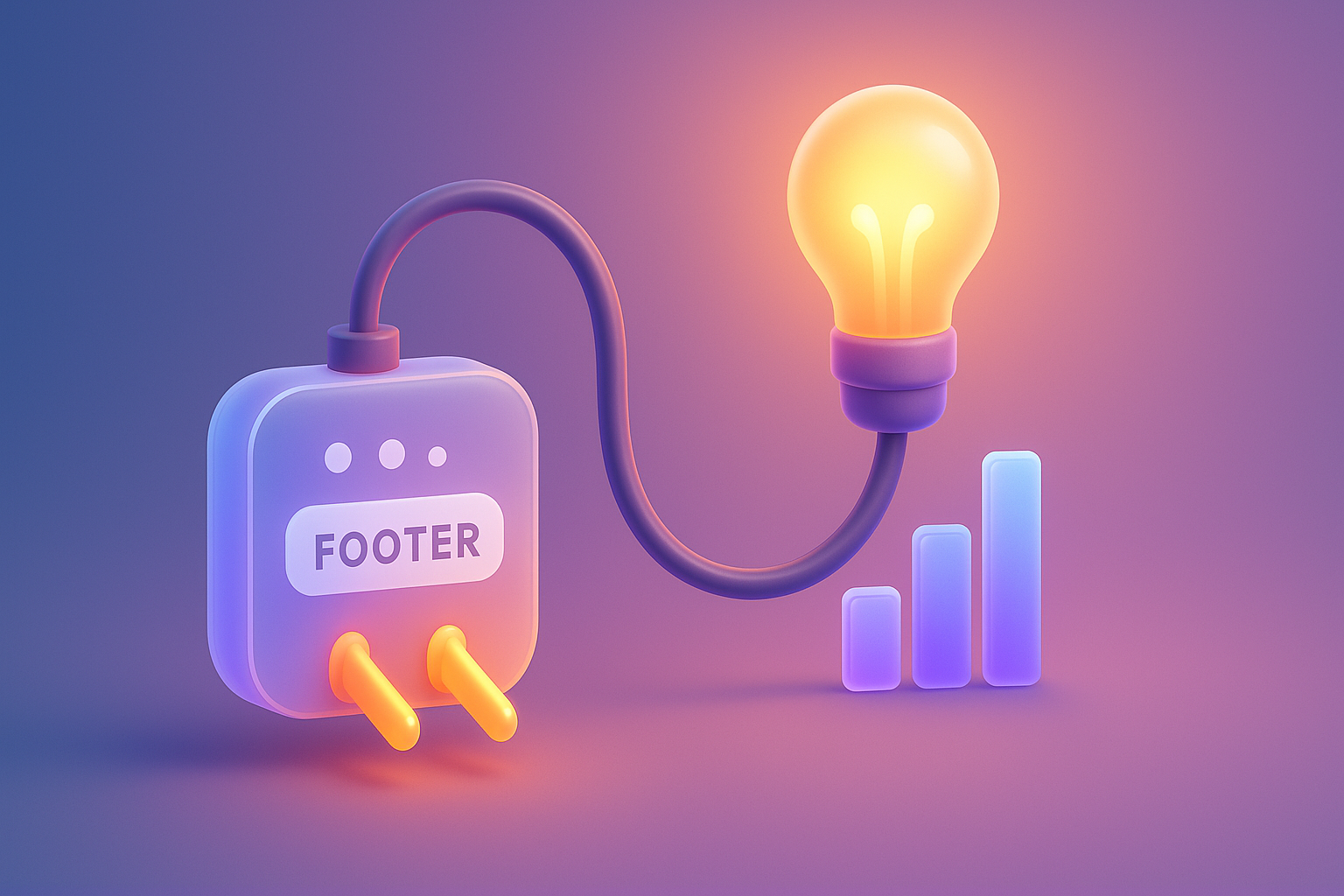OKR (Objectives and Key Results) for the website and SEO

The real problem in life
When the end of the quarter The atmosphere in the meeting room began to "Maku" everywhere ... The SEO team shows the traffic graph that is rising satisfied. The Website team presents a new feature that has just released everyone. "Working hard" and has a "work" to show, but CEO asked. "And all of this ... How many people can the company get more customers? How much sales grow? "
Everyone in the room is quiet ... The answer is a stunning. The eyes that looked back and forth And the feeling that "We work together, almost tired. But why can't you answer the most important question? "This problem is not uncommon. It is the classic of the team that "diligent" but "without direction" is everyone rowing the boat. But instead rowed in the basin Because we don't have "Co -target" that can be realized and linked to the company's big goals.
Prompt for illustrations: The meeting room with beautiful graphs on the screen but the atmosphere is tense. Everyone has a confused and worried expression when the management is asking important questions.
Why did that problem occur?
The source of the problem "Work hard but do not see business results." Not good from the team is not good or not diligent. But due to the fact that we "Set the wrong goal." We tend to trap the target that is just a "activity" (Activities), not the "outcomes" that are tangible.
Take a look at the familiar target sample:
- The SEO team: "Make on-page SEO every page" or "create a backlink for 20 links"
- Website Team: "Adjust the new Homepage page" or "reduce the web download speed to 2 seconds"
The question is ... and what? Completed these things Does not guarantee that the company will get more customers or sales? This is the point called "The Gap Between Action and Impact, each team works in their own world (Silo) without" the same language "that is used to measure the success in the big picture, that is" business results ".
Prompt for illustrations: infographic showing "Old target" (such as checklist icon, icon writing code) that points to the dead end with "new target" (icon graph, a trophy icon) with clear routes to the business goal. (Silver or customer icon)
If left, how will it affect?
Letting the team work without direction together Is like allowing the water to leak off the boat little by little Finally, the whole boat can be sinking. The consequences are more serious than just answering CEO questions:
- Melting budget: Money and time spent with the development or SEO may not create a worthwhile return. Causing executives to start asking about the necessity of that team or project Which learning how Present the budget to improve the website. Will be much more difficult
- The team runs out of power (Burnout): Nothing can destroy the encouragement as hard work and see the value of what they do. The team will start to feel that their work is just a "gear" that is small.
- Lost the opportunity for competitors: While we were busy with our own "activities", the competitors who focused "the correct results" may be quietly competing for market share and customers.
- Decide: When there is no information that indicates business results The decision of what to do next will depend on "feelings" more than "truth" which is at risk of walking.
In the end, the company will be stuck in the palace of "busy work" but not "grow", which is a very dangerous situation in the current business world.
Prompt for illustrations: The graph showing the ROI line (the return of investment) that gradually plummeted with a picture of a worker that looks tired and confused beside.
Is there any solution? And where should it start?
The solution of this problem is to lead the Framework. The powerful goal of OKR (Objectives and Key Results) is used. OKR is used by a large company like Google, Intel, to many startups. Because it helps to change the way of thinking from "What should we do?" (What We do) is "What will we create?"
The main concept of OKR is easy:
- Objective (O) - Objective: Is a challenging goal. Inspiring and "No numbers" say "Where are we going?"
- Key Results (KRS) - The main result: "The indicators of success" 3-5 items that have "numbers" clearly, how do we know that we have arrived there "(How do we know we he already?) Every KR must actually measure and push Objive.
Simply put, Objective is "dream" and Key Results is the "map to measure the distance" that says how close we are. The beginning of the OKR is to change the conversation in the team to focus on "results" from the first day of the quarter. For more information about basic principles Can be studied from What Matters , which is a good source of information Or see the target of Google's Re: Work
Prompt for illustrations: Diagram that looks clean and easy to understand. Explain the OKR structure: There is a big box written "Objective: The objective objective" and there are 3-4 sub-lines that say "Key Result 1, 2, 3: The results that can be measured by numbers"
Examples from the real thing that used to be successful
In order to be clearer Take a look at the example of the company named "Datadriven Corp." which provides B2B software services. They switch from the same goals to OKR for the web and SEO in the 3rd quarter.
Old target (before using OKR):
- "Improve the new Pricing Page page"
- "SEO gives the keyword 'B2B Software' attached to TOP 10"
Results: Complete the target, but the Demo Request The team is confused why
New goals (after using OKR):
Objective: Create experience on a change website. "Visitors" to become "those who are truly interested in the product (Qualified Leads)"
- KR1: Add the Conversion Rate of the Pricing Page page from 2% to 4%.
- KR2: Increase the amount of Demo Request from Organic Traffic (visitor from Google) by 30%.
- KR3: Reduce BOUNCE RATE BLOG with a top 5 traffic. 15%
Actual results: When there is a clear OKR, the team is not just "adjusting the design" but they do A/B Testing, adjusting the call-to -ction text, and adding VDO reviews on the PRICING page, which makes the KR1 successful. But focusing on the article that answers the customer's question and put the Internal Link to Demo Request page, KR2 and KR3 follow the end of the company. The company has increased by 45% because everyone knows that the target is not just "Completed work", but "success in KR successfully", which the ROI measurement of the website becomes clear and instantly tangible.
Prompt for illustrations: The Side-BY-SIDE compare images on the left (before (before) is a Dashboard with only Vanity Metrics (such as Traffic, Pageviews) that are green. But the sales are red on the right (After) is a Dashboard that shows OKR with the progress bar of each key result that is moving closer to the target and has a higher Qualified Leads graph.
If wanting to follow, what to do? (Can be used immediately)
Ready to try the OKR to use with your team? You don't have to wait. Try to follow these 4 simple steps:
- Starting with the big picture of the company: OKR of a good team must always be consistent with the main goals of the company. Ask yourself first, "In this quarter, what does the company want to see the most?" (For example, increase revenue, expand the new customer base, increase the return of the purchase).
- Determine the Objective of the team (1 item): from the company's big target Let the web team and SEO help think of Objective that challenge and inspire, such as "turn the website into a high quality Leads production tool" or "create Authority to become the number one source in the industry."
- Brainstorming for Key Results (3-5 items): This is the most important part. Ask this question to the team: "If our objective is really successful What numbers do we see? "Every KR must be outcome (outcome) is not activity and must measure results.
- Example KR for the SEO team:
- Add the Organic Clicks of the "Commercial Inten" keyword group. 40%
- Increase number 1-3 from 15 pages to 30 pages
- Get a conversion from Organic Traffic via Blog page up to 25% (must set the Tracking on Google Analytics 4 to be ready)
- Example KR for the Website Team:
- Add the Conversion Rate on the main landing page for the new campaign from 5% to 8%.
- Improve the core web vitals (LCP, FID, CS) to pass the "Good" criteria on every important page.
- Reduce the steps in the checkout funnel from 4 steps to 2 steps.
- Example KR for the SEO team:
- Follow up and communicate regularly: OKR is not something that has been left, but must be checck-in every week or every 2 weeks to see how each KR progresses. What are some obstacles? And everyone in the team still understands or not, having a clear team structure Will help make communication smoother
PROMPT for illustrations: Step-By-Step in 4 steps. Setting OKR by using an easy-to-understand icon for each step (such as a large-scale camera image, archery, for Objective, a picture of the key results, and calendar images for tracking).
Questions that people tend to wonder And the answers that are cleared
Question: How is OKR and KPI different?
Answer: Think KPI (Key Performance Indicator) is the "health gauge" of the business, like a pressure or pulse that we have to keep watching (such as the total traffic, uptime of the server). OKR is the "training program for growth" that we set up to push for a short change or growth in a short period. Both can be used together.
Question: If making a key result less than 100%, is it failure?
Answer: No! In the culture of OKR, we support the goal of "Ambitious" (Ambitious). The operation is about 70-80%. It is considered to be beautiful and beautiful. If the team is 100% every time, it may mean that the target set is too easy.
Q: How many Objective and Key Result per quarter?
Answer: For the team to have a clear focus Recommend only 1 Objective per team per quarter and with about 3-5 Key Results, with enough goals, will make the power of the team scattered and unable to create a true IMPACT.
Question: Must be the executive level only to start using OKR?
Answer: Not necessary at all. Small teams or even people can apply the OKR principles to create a focus and measure their own results as well. You can start experimenting on your team first. When seeing good results, then present to the whole organization to see the image.
Prompt for illustrations: 4 question cards-answers (Q&A CARDS). Each card has an icon that conveyed a question (such as icon graphing for the OKR VS KPI, a percentage icon for the target) and a clear answer.
Summary to be easy to understand + want to try to do
The use of the OKR in the website and the SEO team is the same as changing from "The paper map that only tells the route" is a "smart GPS" that is not only saying where we are. But still tell the speed Remaining distance And accurately assess the time It helps to change the work that used to be based on "feelings" and "activities" to become a work that drives by "data" and "results" that everyone in the team and executives see the same images.
Ten thousand Li travels start at the first step. Don't wait for everything to be perfect. Try to choose a small project. Or starting with your team in the quarter. Set a good OKR. You will see the change of the focus and the power of the team.
It's time to change the "busy work" to "create success at measurement"! Try using the steps in this article to apply to your team. And prepare to see the results that will make everyone cry wow!
And if you feel that Large website improvement To be in line with business goals, it looks like a challenge. Having experts who understand both business and technology as a consultant may be the best answer for you.
Prompt for illustrations: The picture of the team that is looking at the Dashboard that shows the OKR, which has a bright green progress bar and growing numbers. With a proud smile The atmosphere is full of positive energy and success.
Recent Blog

Don't overlook Footer! A collection of Website Footer design techniques that help improve UX, supplement SEO and change the visitors to become the Lead.

When the Browser Tracking is limited! Get to know Server-Side Tracking that allows you to collect customer data more precisely and safer. For effective marketing

Stop writing vignettes! Learn how to create Topic Clusters and Pillar Pages for the B2B website to create expertise in the eyes of Google and customers.






